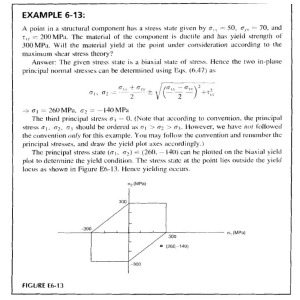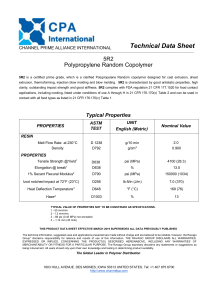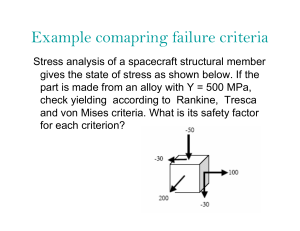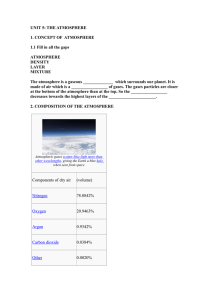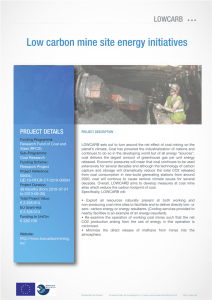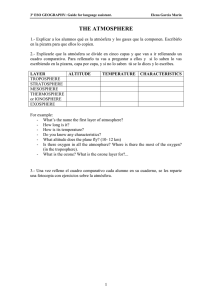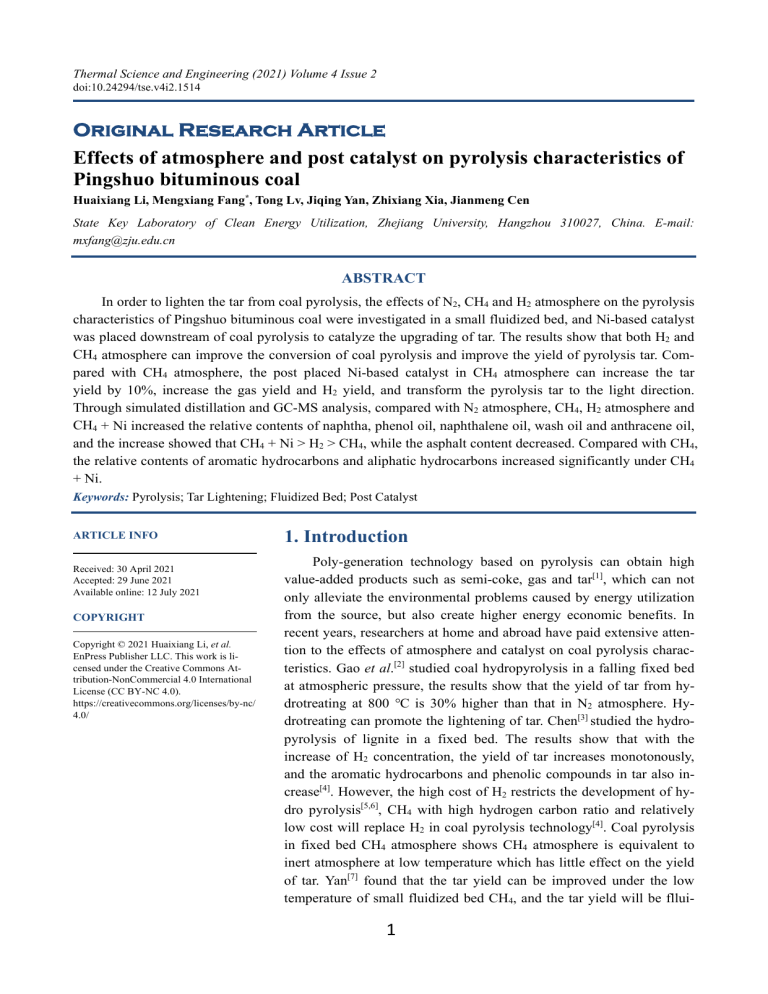
Thermal Science and Engineering (2021) Volume 4 Issue 2 doi:10.24294/tse.v4i2.1514 Original Research Article Effects of atmosphere and post catalyst on pyrolysis characteristics of Pingshuo bituminous coal Huaixiang Li, Mengxiang Fang*, Tong Lv, Jiqing Yan, Zhixiang Xia, Jianmeng Cen State Key Laboratory of Clean Energy Utilization, Zhejiang University, Hangzhou 310027, China. E-mail: mxfang@zju.edu.cn ABSTRACT In order to lighten the tar from coal pyrolysis, the effects of N2, CH4 and H2 atmosphere on the pyrolysis characteristics of Pingshuo bituminous coal were investigated in a small fluidized bed, and Ni-based catalyst was placed downstream of coal pyrolysis to catalyze the upgrading of tar. The results show that both H2 and CH4 atmosphere can improve the conversion of coal pyrolysis and improve the yield of pyrolysis tar. Compared with CH4 atmosphere, the post placed Ni-based catalyst in CH4 atmosphere can increase the tar yield by 10%, increase the gas yield and H2 yield, and transform the pyrolysis tar to the light direction. Through simulated distillation and GC-MS analysis, compared with N2 atmosphere, CH4, H2 atmosphere and CH4 + Ni increased the relative contents of naphtha, phenol oil, naphthalene oil, wash oil and anthracene oil, and the increase showed that CH4 + Ni > H2 > CH4, while the asphalt content decreased. Compared with CH4, the relative contents of aromatic hydrocarbons and aliphatic hydrocarbons increased significantly under CH4 + Ni. Keywords: Pyrolysis; Tar Lightening; Fluidized Bed; Post Catalyst ARTICLE INFO Received: 30 April 2021 Accepted: 29 June 2021 Available online: 12 July 2021 COPYRIGHT Copyright © 2021 Huaixiang Li, et al. EnPress Publisher LLC. This work is licensed under the Creative Commons Attribution-NonCommercial 4.0 International License (CC BY-NC 4.0). https://creativecommons.org/licenses/by-nc/ 4.0/ 1. Introduction Poly-generation technology based on pyrolysis can obtain high value-added products such as semi-coke, gas and tar[1], which can not only alleviate the environmental problems caused by energy utilization from the source, but also create higher energy economic benefits. In recent years, researchers at home and abroad have paid extensive attention to the effects of atmosphere and catalyst on coal pyrolysis characteristics. Gao et al.[2] studied coal hydropyrolysis in a falling fixed bed at atmospheric pressure, the results show that the yield of tar from hydrotreating at 800 ℃ is 30% higher than that in N2 atmosphere. Hydrotreating can promote the lightening of tar. Chen[3] studied the hydropyrolysis of lignite in a fixed bed. The results show that with the increase of H2 concentration, the yield of tar increases monotonously, and the aromatic hydrocarbons and phenolic compounds in tar also increase[4]. However, the high cost of H2 restricts the development of hydro pyrolysis[5,6], CH4 with high hydrogen carbon ratio and relatively low cost will replace H2 in coal pyrolysis technology[4]. Coal pyrolysis in fixed bed CH4 atmosphere shows CH4 atmosphere is equivalent to inert atmosphere at low temperature which has little effect on the yield of tar. Yan[7] found that the tar yield can be improved under the low temperature of small fluidized bed CH4, and the tar yield will be fllui- 1 dized bed CH4, and the tar yield will be further improved under the high temperature due to the free radicals and hydrogen produced by the decomposition of methane. CH4 can improve the yield of tar, but the effect is limited. The catalytic activation of methane to improve the yield of tar has been widely concerned. The influence of different catalyst and catalyst arrangement on tar yield was investigated in fixed bed by Zhao[8]. It was found that Mo/HZSM-5 and Ni/Al2O3 could increase tar at 600 ℃ by 17.5%, and the content of light components in tar is more than 90%. Wang et al.[9] improved tar yield by combining in-situ catalytic cracking of coal pyrolysis tar with methane in a fixed bed, and the average molecular weight of tar decreased. Compared with 5% Co/Al2O3 and 5% Fe/Al2O3, 5% Ni/Al2O3 obtained light tar with higher content and yield. Li[10] found that adding pre-Mo/HZSM-5 in CH4 atmosphere can greatly improve the tar yield, and the pre-catalyst has better effect than the mixing of coal and catalyst. Yan[7] found that the addition of Ni-based catalyst under CH4 + N2 atmosphere increased the tar yield at 600 ℃ by 40% and the aromatic hydrocarbons content by 16% compared with no catalyst added. Based on the above research results, CH4, H2 atmosphere and catalyst can effectively improve the yield and quality of coal pyrolysis tar, and the separation of coal and catalyst is better. However, nowadays, most of the catalytic activation of methane is carried out in fixed bed, and less research is involved in small fluidized bed which is closer to industrial application. Therefore, this study investigated the effects of N2, CH4 and H2 atmosphere on the pyrolysis characteristics of Pingshuo bituminous coal in a small fluidized bed, and placed Ni-based catalyst on the downstream of coal pyrolysis to achieve the goal of catalytic upgrading of coal pyrolysis gas-phase tar before condensation. 2. Experimental part 2.1 Preparation of coal sample and catalyst Shanxi Pingshuo bituminous coal was selected as the experimental coal, and the raw coal was crushed and screened to obtain a particle size of 1.25–2 mm coal samples. Before the experiment, the coal sample was dried in a blast drying oven at 105 ℃ for 6 hours, sealed and stored for use. The fluidizing medium of fluidized bed is 0.25–0.35 mm quartz sand. See Table 1 for industrial analysis and elemental analysis of experimental coal samples. Table 1. Industrial analysis and elemental analysis of Pingshuo bituminous coal Industrial analysis wad/% Elemental analysis wad/% M A V FC C H N S 1.20 39.08 25.31 34.41 42.49 2.16 0.94 2.47 *Obtained by subtraction O* 11.66 tion device. The inner diameter of the preheating section is 20 mm, and the length is 3.5 m, the inner diameter of the reaction section is 50 mm, and the length is 1.2 m, heated by silicon carbide rods arranged uniformly and graded, the temperature can reach 1,000 ℃, and the insulation section is heated by resistance wire. The liquid collection device is composed of two-stage serial serpentine tubes (placed in a constant temperature and low temperature tank at -10 ℃), filters and three-stage parallel glass fiber filter cartridges to ensure complete collection of tar and water. The catalyst Ni/Al2O3 is prepared by equal volume impregnation[11]. It is impregnated with Ni (NO3)2·6H2O salt solution for 12 hours, dried at 105 ℃ for 6 hours, roasted at 550 ℃ for 6 hours, sealed and stored for later use after reduction, and the Ni load is 5% (mass fraction). 2.2 Experimental method The small-scale fluidized bed pyrolysis experimental system used in the experiment is shown in Figure 1. The experimental system is mainly composed of a gas supply system, a preheating section, a reaction section, a heat preservation section (catalyst placement section), and a product collec- 2 Figure 1. Experimental system of small fluidized bed pyrolysis. 1–mass flowmeter; 2–preheating section; 3–upper hopper; 4–cyclone separator; 5–catalyst; 6–liquid collection device; 7–air bag; 8–air pump; 9–horizontal section; 10–lower hopper; 11–reaction section; 12–screw feeder. 12 g. Before the experiment, 550 g quartz sand was fed from the upper hopper as bed material. Set the heating program and wait for the fluidized bed furnace body to rise temperature, during which a small amount of N2 is introduced to ensure safe operation. When the temperature of the reaction section rises to the pyrolysis temperature, adjust the fluidization gas volume to 25 L/min. The fluidization gas is N2, and the mixed volume ratio is 60% N2 + 40% CH4 and 60% N2 + 40% H2. When the atmosphere is completely replaced with the pyrolysis atmosphere set in the experiment, slowly feed 30 g of coal sample from the upper hopper, immediately open 120 L aluminum foil air bag to collect the gas. The pyrolysis tar and water are fully condensed through the liquid collection device, and the pyrolysis time is 3 min. After the reaction, open the lower hopper to collect the semi-coke and bed material, remove the hopper and seal it for storage to prevent the high-temperature oxidation of the semi-coke. After it is naturally cooled to room temperature, sieved to obtain the quality of the semi-coke. The tar and water are washed repeatedly with analytical pure acetone solution, and sealed and stored after filtering the fly ash. The quality of tar and water is obtained by the subtraction method from the quality of the liquid collection device before and after the reaction. The post catalyst is placed behind the cyclone separator, the temperature of the catalytic section is set to 500 ℃, and the amount of catalyst is 2.3 Calculation, measurement and analysis of pyrolysis product yield The water content of the tar was measured with ZDJ-2S card type micro moisture tester to calculate the mass of water and tar. The volume of pyrolysis gas is obtained according to the difference between the measured volume of gas meter and the volume of carrier gas. The yield of pyrolysis products is calculated by the following formula: 𝑊𝑊char − 𝑊𝑊 × 𝐴𝐴 𝑌𝑌char = × 100% 𝑊𝑊 × (1 − 𝐴𝐴 − 𝑀𝑀) (1) 𝑌𝑌𝑡𝑡𝑡𝑡𝑡𝑡 = 𝑊𝑊𝑡𝑡𝑡𝑡𝑡𝑡 × 100% 𝑊𝑊 × (1 − 𝐴𝐴 − 𝑀𝑀) 𝑌𝑌𝑤𝑤𝑤𝑤𝑤𝑤𝑤𝑤𝑤𝑤 = 𝑌𝑌𝑔𝑔𝑔𝑔𝑔𝑔 = 𝑊𝑊𝑤𝑤𝑤𝑤𝑤𝑤𝑤𝑤𝑤𝑤 − 𝑊𝑊 × 𝑀𝑀 × 100% 𝑊𝑊 × (1 − 𝐴𝐴 − 𝑀𝑀) 𝑉𝑉𝑔𝑔𝑔𝑔𝑔𝑔 × 100% 𝑊𝑊 × (1 − 𝐴𝐴 − 𝑀𝑀) (2) (3) (4) In the equation: Ychar, Ytar, Ywater and Ygas are the yields of semi-coke, tar, water and gas respectively (calculated on dry ash free basis); Wchar, Wtar and Wwater are the quality of semi-coke, tar and water respectively; Vgas is the volume of gas; W is the quality of pyrolysis 3 600 ℃, 700 ℃, 800 ℃), different pyrolysis atmospheres (N2, 60% N2 + 40% CH4, 60% N2 + 40% H2, abbreviated as N2, CH4, H2 for convenience) and post catalyst Ni/Al2O3 were investigated in a small fluidized bed. coal; A and M are the ash and moisture content of coal sample (calculated on air drying basis). The gas components are detected by Agilent 7890A, and standard gas is used for calibration before detection. The gas components CH4, C2–C3 (the sum of C2H4, C2H6, C3H6 and C3H8), CO, CO2 and H2 were obtained and the yield of the above components are calculated. After the moisture content of the tar solution is measured, the excess anhydrous sodium sulfate is used to remove the moisture, and then the tar sample is obtained by distillation with a rotary distiller for 6 hours. The distillation temperature is 62 ℃ and the rotating speed is 20 r/min. The tar components are analyzed by GC-MS with GC/MS-QP2010SE. The tar sample is diluted to 5% with analytical pure CH2Cl2 and then injected. The temperature of the injection port is 300 ℃. The chromatographic column model is SH-Rxi-5Sil MS and its specification is 30 m × 0.25 mm × 0.25 μm. GC temperature rise procedure: column temperature was kept at 60 ℃, maintained for 2 min; then raise the temperature to 180 ℃ at the heating rate of 4 ℃/min for 2 minutes, and finally raise the temperature to 300 ℃ at the heating rate of 10 ℃/min for 10 minutes. The tar fraction is obtained by simulated distillation of gas chromatography Agilent 7890A, and the specification of packed column is 1/8 inch × 0.5 m, the tar sample is diluted to 5% with analytical pure CS2 and then injected. The temperature rise procedure of GC is: the initial temperature is 35 ℃ and maintained at 35 ℃ for 0.5 min; rise to 350 ℃ at the heating rate of 10 ℃/min for 1 min, then rise to 400 ℃ at the heating rate of 5 ℃/min for 10 min. During determination, H2 (40 mL/min) and air (400 mL/min) are combustion gas and N2 (25 ml/min) is carrier gas. 3.1 Effect of atmosphere on the yield of coal pyrolysis products Figure 2 shows the yield law of coal pyrolysis products under different pyrolysis atmospheres and different pyrolysis temperatures. The mass recovery of each experiment is more than 94%, and the experiment has good repeatability. Figure 2(a) shows the effects of different atmospheres on the yield of semi-coke from coal fluidized bed pyrolysis. Under the three atmospheres, the yield of coal pyrolysis semi-coke decreased gradually with the increase of pyrolysis temperature. Compared with N2 atmosphere, the yield of semi-coke in H2 atmosphere decreases, and the trend is basically the same as that in N2 atmosphere. In the process of coal pyrolysis, the activated hydrogen free radicals provided by the H2 atmosphere combine with the fragment free radicals generated by the breakage of chemical bonds in the coal, reducing the degree of polycondensation between fragments., which effectively improves the coal pyrolysis conversion and promotes the release of volatile matter. Compared with N2, CH4 atmosphere reduces the yield of semi-coke in the low temperature section lower than 600 ℃, indicating that CH4 atmosphere promotes the coal pyrolysis reaction at low temperature. However, the degree of CH4 atmosphere promoting coal pyrolysis at low temperature is not as good as that of H2 atmosphere, which indicates that the nature of CH4 at low temperature is relatively stable and the amount of activated free radicals provided is small. While in the high temperature section above 700 ℃, the CH4 atmosphere increases the yield of semi-coke. Because there are two competitive reactions of CH4 atmosphere on coal pyrolysis: on the one hand, the free radicals generated by CH4 decomposition stabilize the molecular fragments generated by coal pyrolysis and inhibit the polycondensation reaction of fragments, so as to improve the conversion of coal; on the oth- 3. Results and discussion In this paper, the pyrolysis product yield, gas component yield, tar component and fraction distribution characteristics of Pingshuo bituminous coal under different pyrolysis temperatures (500 ℃, 4 er hand, decomposition of methane occurs at high temperature CH4 → C + 2H2, and the pyrolysis carbon deposition leads to an increase in the semi-coke yield, while inhibiting the precipitation of volatiles in the semi-coke. This confirmed that the increase in pyrolysis semi-coke yield at high temperature is mainly caused by the carbon deposition of methane cracking at high temperature. Figure 2. Yield of coal pyrolysis products under different atmospheres. groups produced by coal pyrolysis, and H2 atmosphere has a stronger ability to provide hydrogen free radicals. Figure 2(c) shows the effect of different atmospheres on the yield of pyrolysis water in fluidized bed. Under the three atmospheres, the yield of pyrolysis water increases gradually with the increase of pyrolysis temperature, and the increasing trend in the high temperature section slows down. This is because more hydrogen radicals are produced at high temperature and the probability of reacting with O increases. Compared with N2 atmosphere, H2 atmosphere and CH4 atmosphere promote the formation of pyrolysis water, and the yield of water in H2 atmosphere is higher. This is because hydrogen free radicals combine with hydroxyl groups produced by coal pyrolysis to produce water. The number of hydrogen free radicals is Figure 2(b) shows the effects of different atmospheres on the yield of tar from coal fluidized bed pyrolysis. It can be seen that the yield of pyrolysis tar first increases and then decreases with the increase of pyrolysis temperature in N2 and H2 atmosphere, and reaches the maximum at 600 ℃. Under CH4 atmosphere, the tar below 700 ℃ meets the trend of first increasing and then decreasing, while the tar yield is higher than 700 ℃ at 800 ℃. This is related to the previous H2 production from methane cracking at high temperature. CH4 cracking at 800 ℃ produces a large amount of H2, so the tar yield is further improved compared with 700 ℃. Compared with N2 atmosphere, CH4 and H2 atmosphere can promote the increase of tar yield, and the promotion effect of H2 is more obvious. This is because these two gases produce a large number of free radicals, which stabilize the macromolecular 5 rate at high temperature. Figure 3(b) shows that compared with N2 atmosphere, CH4 and H2 atmosphere are conducive to the formation of C2–C3 gas. At high temperature, free radicals such as methyl and methylene produced by coal pyrolysis can be combined with free radicals provided by CH4 or H2 atmosphere to form stable small molecular hydrocarbons[15]. At low temperature, CH4 and H2 have similar promoting effects on the release of C2–C3. At high temperature, the ability of CH4 atmosphere to produce living free radicals gradually increases, and the yield of C2–C3 is slightly higher than that of H2 atmosphere. Figure 3(c) and Figure 3(d) show the changes of CO and CO2 yields under different atmospheres, respectively. In the process of coal pyrolysis, the production of CO comes from the decomposition of carbonyl group, CH3O-, phenolic hydroxyl and oxygen-containing heterocycles, while CO2 mainly comes from the decomposition of carboxyl, esters and inorganic carbonates[16]. It can be seen that the increase of temperature will promote the decomposition of these functional groups and make the precipitation of CO and CO2 more thorough. The existence of activated free radicals in pyrolysis atmosphere can also promote the bond breaking of functional groups and the formation of stable compounds. The yield of CO in H2 atmosphere is higher than that in N2 atmosphere, the yield of CO2 is lower than that in N2 atmosphere, because the occurrence of reaction H2 + CO2 → H2O + CO promotes the conversion of CO2 to CO, resulting in a more significant increase in the yield of CO. CH4 atmosphere at 600 ℃ and below has little effect on the yield of CO and CO2 in pyrolysis gas; the precipitation of CO2 was slightly inhibited above 700 ℃, while the yield of CO was between N2 and H2 atmosphere. It can be inferred that the activation and decomposition of CH4 is mainly above 700 ℃, while the CH4 gas itself in the low temperature section has no obvious effect on the reaction of functional groups in coal. Figure 3(e) shows the variation of H2 yield with pyrolysis temperature in N2 and CH4 atmosphere. Dehydropolycondensation of aromatic structure in coal under N2 atmosphere is the main source the largest in H2 atmosphere, so the yield of aquatic products is the highest. Figure 2(d) shows the effects of different atmospheres on the yield of coal pyrolysis gas in coal fluidized bed. Under the three atmospheres, the gas yield increases gradually with the increase of pyrolysis temperature. This is because at high temperature, the organic matter in coal decomposes more completely and the gas is released more thoroughly. The effect of pyrolysis temperature on gas yield is more significant than pyrolysis atmosphere. Compared with N2 atmosphere, the gas yield in H2 atmosphere is increased. Under CH4 atmosphere, the increase of gas yield in low temperature section is not obvious, because CH4 atmosphere is inert in low temperature section. The increase of gas yield in high temperature section is significant, which is mutually confirmed by the decomposition of methane to produce hydrogen at high temperature. 3.2 Effect of atmosphere on the yield of gas components Figure 3 shows the effect of atmosphere on the yield of each component of pyrolysis gas in coal fluidized bed. Because the carrier gas flow required for fluidization in this experiment is much larger than the amount of gas generated by pyrolysis, considering the metering error, this paper will no longer investigate the gas yield in the pyrolysis gas with the same composition as the carrier gas. As can be seen from Figures 3(a)–3(e), with the increase of pyrolysis temperature, the yields of various gases produced by pyrolysis in different atmospheres show an increasing trend. It can be seen from Figure 3(a) that H2 atmosphere can significantly promote the formation of CH4 during coal pyrolysis. The formation of CH4 mainly comes from the bond breaking of alkyl compounds during pyrolysis[14]. The hydrogen radicals provided by H2 atmosphere can effectively stabilize the side chain groups such as methyl and methylene separated from the macromolecular network of coal, so as to promote the formation of CH4. In the figure, when H2 atmosphere increases from 700 ℃ to 800 ℃, the small decrease of CH4 yield is the result of the increase of CH4 cracking 6 temperature. At 700 ℃ and above, the high temperature decomposition of CH4 in the carrier gas becomes the main source of H2. of H2 in pyrolysis gas[17]. With the increase of pyrolysis temperature, the H2 yield increases gradually and slowly. Compared with N2 atmosphere, H2 yield in CH4 atmosphere increased significantly with Figure 3. Yield of pyrolysis gas components under different atmospheres. post Ni-based catalyst redistributes the gas-liquid products of coal pyrolysis. Under the condition of no catalyst, the yield increases by 600%, especially under the condition of no catalyst. The yield of aquatic products decreased and the yield of gas increased. The redistribution of the above product yields is attributed to the good catalytic effect of Ni catalyst on CH4[18]. Due to the existence of Ni based 3.3 Effect of post catalyst on the yield of pyrolysis products Figure 4 shows the effect of post catalyst Ni/Al2O3 on the yield of pyrolysis products. Figure 4(a) shows that under the action of post catalyst Ni/Al2O3, the yield of semi-coke is lower than that without catalyst. Figures 4(b)–4(d) show that the 7 catalyst, CH4 atmosphere will produce more active radicals such as methyl, methylene and hydrogen radicals. These radicals will recombine the pyrolysis products after contacting with the volatile sub- stances of coal pyrolysis, increasing the yield of tar and gas. As a result, coal pyrolysis is carried out more in the direction of volatilization analysis, resulting in a decrease in the yield of semi-coke. Figure 4. Effect of post catalyst on the yield of pyrolysis products. Figure 5 shows the effect of post catalyst on H2 yield. The results showed that Ni-based catalyst promoted H2 precipitation at various pyrolysis temperatures, especially at 600 ℃ and 800 ℃. At 700 ℃, Ni-based catalyst has no obvious effect on H2 yield. 3.4 Influence of atmosphere and post catalyst on tar Figure 5. The effect of post catalyst on H2 yield. 8 Samples obtained under various working conditions shall be analyzed with simulated distillation and GC-MS. Tar samples of N2, CH4, H2 and CH4 + Ni at 600 ℃ were analyzed as representative data. According to ASTM D2887 method, tar is divided into naphtha with a boiling point of lower than 170 ℃, phenol oil with a boiling point of 170– 210 ℃, wash oil with a boiling point of 210–230 ℃, naphthalene oil with a boiling point of 230–300 ℃, anthracene oil with a boiling point of 300–360 ℃ and asphalt with a boiling point of more than 360 ℃. Figure 6(a) shows that compared with N2 atmosphere, CH4, H2 and CH4 + Ni all make the simulated distillation curve of tar move to the low temperature zone, and the moving range is CH4 + 6(b) shows the effects of atmosphere and catalyst on tar fraction. It is found that compared with N2 atmosphere, the contents of light oil, phenol oil, naphthalene oil, wash oil and anthracene oil under the conditions of CH4, H2 and CH4 + Ni are increased, and the increase amount shows that CH4 + Ni > H2 > CH4, while the asphalt content decreases. Ni > H2 > CH4. This shows that the tar is transforming to the direction of lightening under CH4 and H2 atmosphere, and the component content of light tar is higher in CH4 + Ni atmosphere. The yield of tar with boiling point lower than 360 ℃ is as follows: CH4 + Ni > H2 > CH4 > N2. The yield of oil with boiling point lower than 360 ℃ under CH4 + Ni is 14.3% higher than that under CH4. Figure Figure 6. Effects of atmosphere and post-catalyst on tar simulated distillation curve (a) and tar fraction (b). post Ni-based catalyst in CH4 atmosphere will greatly increase the relative contents of aromatic hydrocarbons and aliphatic hydrocarbons, while the phenolic substances will be greatly reduced. This is because CH4 produces a large number of methyl, methylene and hydrogen free radicals under the action of Ni-based catalyst, which react when contacting with gas-phase tar, so that some phenolic substances are reduced to aromatic hydrocarbons. At the same time, under the action of Ni-based catalyst, aliphatic hydrocarbons also broke, resulting in a further increase in the relative content of aliphatic hydrocarbons. Compared with N2 atmosphere, the relative content of heteroatom compounds in tar under the conditions of CH4, H2 and CH4 + Ni is reduced, indicating that CH4 and H2 atmosphere can remove heteroatoms to a certain extent. Table 2 shows the GC-MS analysis of pyrolysis tar at 600 ℃. It can be seen from Table 2 that there are more aromatic hydrocarbons in tar under N2 atmosphere, with a relative content of 48.14%, followed by aliphatic hydrocarbons and phenols, while the content of oxygen-containing non-phenolic aromatic hydrocarbons is relatively small. Compared with N2 atmosphere, the relative content of aromatic hydrocarbons in tar in CH4 and H2 atmosphere is lower, while the relative content of aliphatic hydrocarbons increases, which indicates that aromatic hydrocarbons are transformed into aliphatic hydrocarbons in reducing atmosphere, because some aromatic hydrocarbons will be converted into aliphatic hydrocarbons by addition reaction under the action of hydrogen free radicals. Compared with CH4 atmosphere, the addition of Atmosphere N2 CH4 H2 CH4 + Ni Table 2. GC-MS analysis of pyrolysis tar at 600 ℃ Relative content % Aromatic hyPhenols Oxygenated Aliphatic hydrodrocarbons non-phenolic carbons aromatic 48.14 16.39 6.87 19.35 38.95 29.27 4.22 22.29 45.70 17.68 2.90 25.36 46.50 14.44 3.38 27.37 9 Alcohols, ketones, ethers, acids 0.81 0.79 0.54 1.78 Heteroatom compounds 8.43 4.48 7.82 6.52 4. Conclusion (1) Compared with N2 atmosphere, both CH4 and H2 can improve the conversion of coal pyrolysis, and the promotion effect of H2 is more obvious. H2 reduces the yield of semi-coke while improves the yield of tar, water and gas. The effect of CH4 on the four products is basically the same as that of H2, but CH4 will decompose at high temperature, resulting in an increase in the yield of semi-coke at high temperature compared with N2 atmosphere. (2) H2 atmosphere can obviously promote the formation of CH4. Compared with N2 atmosphere, both CH4 and H2 atmosphere are conducive to the formation of C2–C3. H2 atmosphere increases the yield of CO and reduces the yield of CO2. The yield of H2 in CH4 atmosphere is higher. (3) Compared with CH4 atmosphere, the addition of post Ni-based catalyst in CH4 atmosphere increases the tar yield by 10%, the gas yield and the H2 yield is increased, and the tar is transformed to the direction of lightening. Compared with N2, CH4, H2 and CH4 + Ni increased the relative contents of light oil, phenol oil, naphthalene oil, wash oil and anthracene oil, and the increase showed that CH4 + Ni > H2 > CH4, while the asphalt content decreased. Compared with CH4, CH4 + Ni greatly increases the relative content of aromatic hydrocarbons and aliphatic hydrocarbons in tar. 3. 4. 5. 6. 7. 8. 9. 10. 11. 12. 13. Acknowledgements Fund Project: National Key Research and Development Program (2018YFB0605000). 14. Conflict of interest 15. The authors declare that they have no conflict of interest. 16. References 1. 2. Deng C. Exploratory experimental study on coal partial gasification of in circulating fluidized bed [MSc thesis]. Beijing: University of Chinese Academy of Sciences (The institute of Engineering Thermophysics, Chinese Academy of Sciences); 2020. Gao R, Dou B, Chang Q, et al. Effect of temperature and hydrogen on product distribution and evolution 17. 18. 10 of char structure during pyrolysis of bituminous coal in a drop tube furnace. Fuel 2020; 267: 70–78. Chen R. Study on Hydro-Pyrolysis of Shuicheng lignite in fixed-bed reactor [MSc thesis]. Beijing: Tsinghua University; 2015 Wang P, Jin L, Liu J, et al. Analysis of coal tar derived from pyrolysis at different atmospheres. Fuel 2013; 104: 14–21. Liao H. Sun C, Li B, et al. Copyrolysis of coal with coke oven gas–Ⅲ. Analyses of tar. Journal of Fuel Chemistry and Technology 1998; 26(1): 3–5. Li B. Hydropyrolysis of Chinese coal–III: Catalytic and non-catalytic hydropyrolysis and pyrolysis under H2–CH4 of Shenfu bituminous coal. Journal of Fuel Chemistry and Technology 1995; 23(2): 192– 197. Yan Q. The effect of atmosphere and catalyst on coal pyrolysis in a fluidized bed [MSc thesis]. Hangzhou: Zhejiang University; 2017. Zhao L. Study on characteristics of pyrolysis under different conditions and mechanism of catalyst used in pyrolysis [MSc thesis]. Hangzhou: Zhejiang University; 2017. Wang M, Jin L, Li Y, et al. In-situ catalytic upgrading of coal pyrolysis tar coupled with CO2 reforming of methane over Ni-based catalysts. Fuel Processing Technology 2018; 177: 119–128. Li M. Studies on coal catalytic pyrolysis characteristics during hydrogen-rich atmosphere [MSc thesis]. Hangzhou: Zhejiang University; 2015. Gao T. Study on pyrolysis characteristics of transition metal oxide supported USY zeolites to Shendong coal [MSc thesis]. Xi’an: Northwest University; 2019. Chen L, Jin J, Suo Y, et al. Effects of methane concentration on CO-gasification of coal and methane. Boiler Technology 2010; 41(5): 1–4. Xie Z, Quan B. Kinetic analysis on the main reactions in the conversion of methane catalyzed by coal char. Natural Gas Chemical Industry (C1 Chemistry and Chemical Industry) 2009; 34(4): 39–41. Gao J. Meide rejie, lianjiao he meijiaoyou de jagong (Chinese) [Coal pyrolysis, coking and coal tar processing]. Beijing: Chemical Industry Press; 2010. Zhao L, Guo H, Ma Q. Study on gaseous products distributions during coal pyrolysis. Coal Conversion 2007; 30(1): 5–9. Siti M. Experimental research on the influence of atmosphere on pyrolysis characteristics during coal pyrolysis in fluidized bed reactor [MSc thesis]. Hangzhou: Zhejiang University; 2018. Wang Y. Experiments on the influence of pyrolysis atmosphere on the fluidized bed pyrolysis characteristics of low rank coal [MSc thesis]. Hangzhou: Zhejiang University; 2020. Yan Q, Cen J, Fang M, et al. Effect of atmosphere and methane catalytic activation on coal pyrolysis in fluidized bed. Coal Conversion 2017; 40(2): 22–28.

